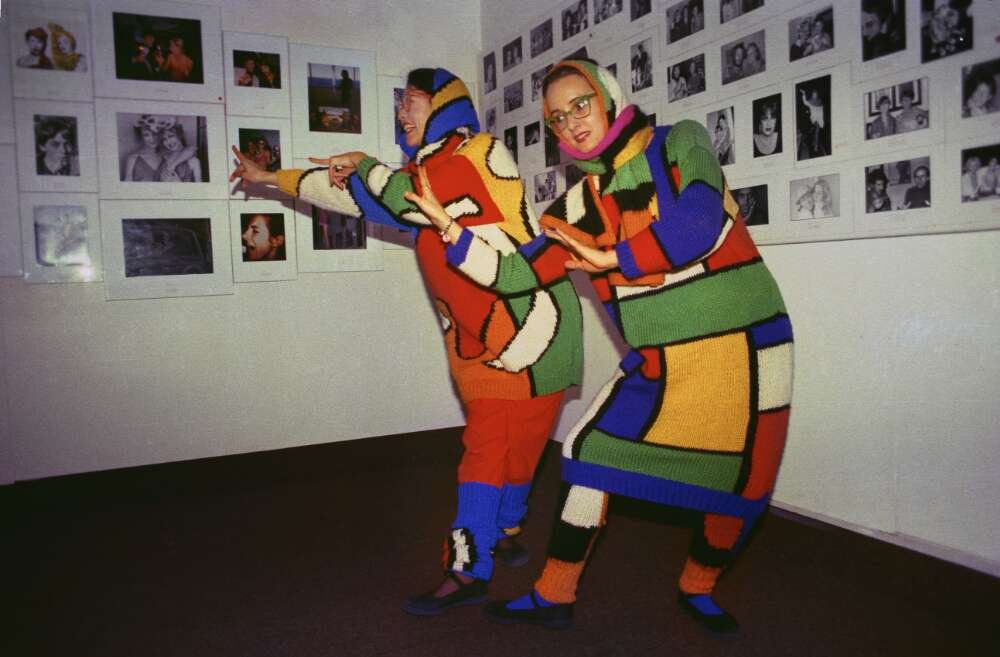
At home, and on the global stage, Australians have contributed to a rich and diverse design history. From modernist architecture to product innovation and couture fashion, Australian designers have helped to create the world we live in today.
This month, we’re celebrating the impact of Australian designers throughout history and how they’ve helped to shape a thriving industry. From the achievements of early twentieth-century tastemaker Ruth Lane Poole to Akira Isogawa’s contemporary runway success, Australian designers continue to pave the way for innovation.
The Library is home to a diverse collection of sketches, photographs, posters, texts and oral histories that tell an important story about Australian design. Read on to learn more about some of our great designers and their accomplishments.
Ruth Lane Poole
A celebrated writer, designer and decorator, Ruth Lane Poole emigrated to Australia in 1925 with her husband, Charles Lane Poole, after his appointment as Commonwealth Forestry Advisor. Her refined decoration style was admired for its subtle Irish Celtic influence, detailed embroidery and use of Australian timbers.
In 1926, she became the first woman appointed by an Australian government to advise on interior decoration. She was tasked with furnishing Canberra’s two official residences – Government House and the Prime Minister’s Lodge – in time for the opening of Parliament House, just one year later.
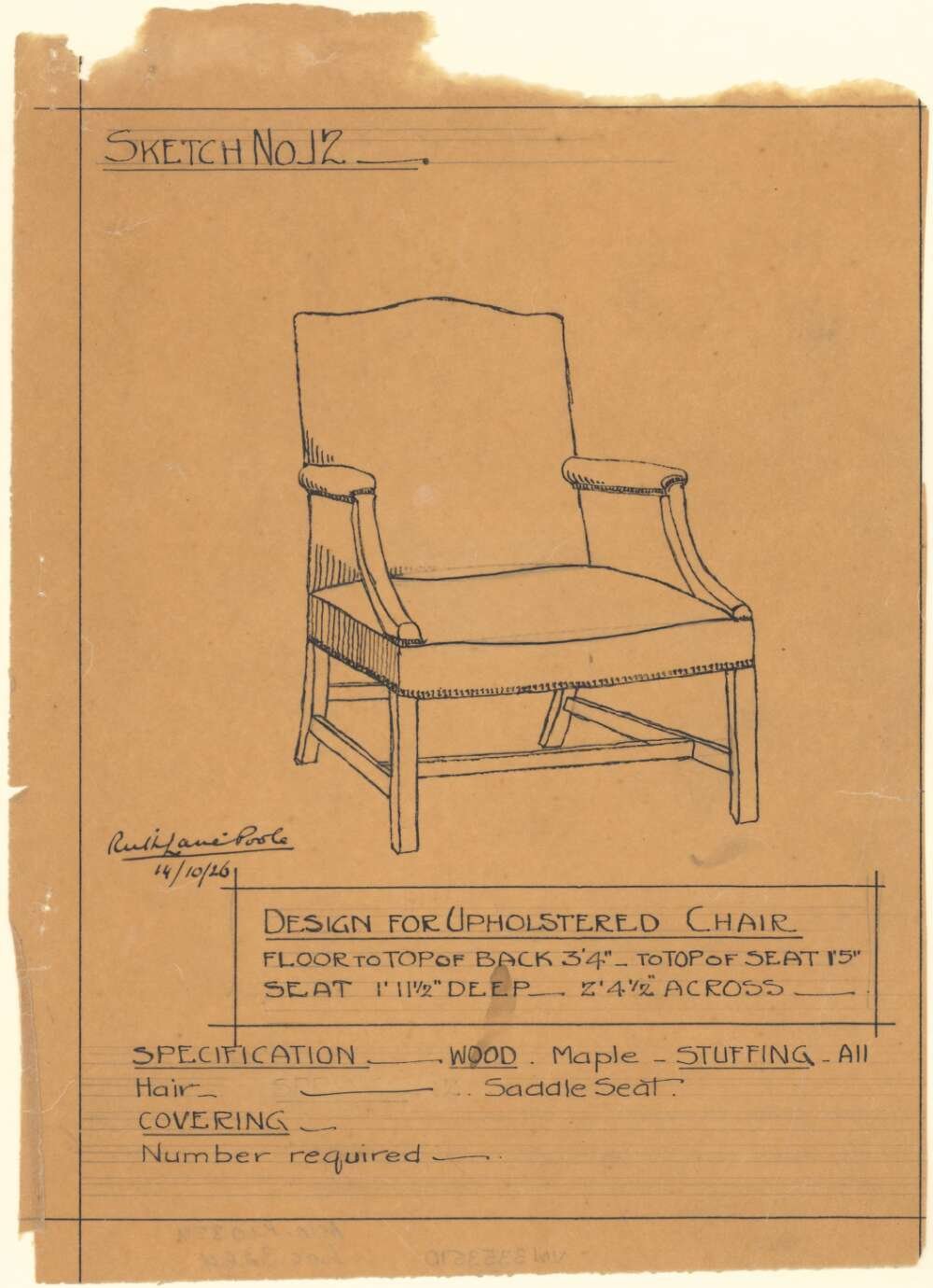
Her elegant style and way with words were promoted in publications like The Australian Home Beautiful, where she published articles about home decoration, trends and furniture design. She may well have been Australia’s first influencer – her work and writing helped to define an Australian flavour of design that, while influenced by its British origins, was aesthetically distinct.
- Explore Ruth Lane Poole’s series of furniture designs for Canberra’s government buildings
- Read Ruth Lane Poole’s article in the May 1926 issue of The Australian Home Beautiful
James Northfield
Graphic artist James Northfield was best-known for his series of tourism posters produced for the Australian government in the 1930s. Retroactively dubbed the Golden Age of poster design in Australia, this period saw Australian scenery and wildlife featured across a variety of advertisements, promoting regional tourism destinations like the Mornington Peninsula and the Great Barrier Reef.
Along with his contemporaries, Northfield was heavily influenced by the modernism movement, marked by a trend away from traditional illustration techniques toward graphic design as we know it today. The use of graphic elements to communicate concepts was gaining popularity, and a rise in popularity of block colours, distinct shapes and art deco typeface elements coincided with the emergence of a distinct style.
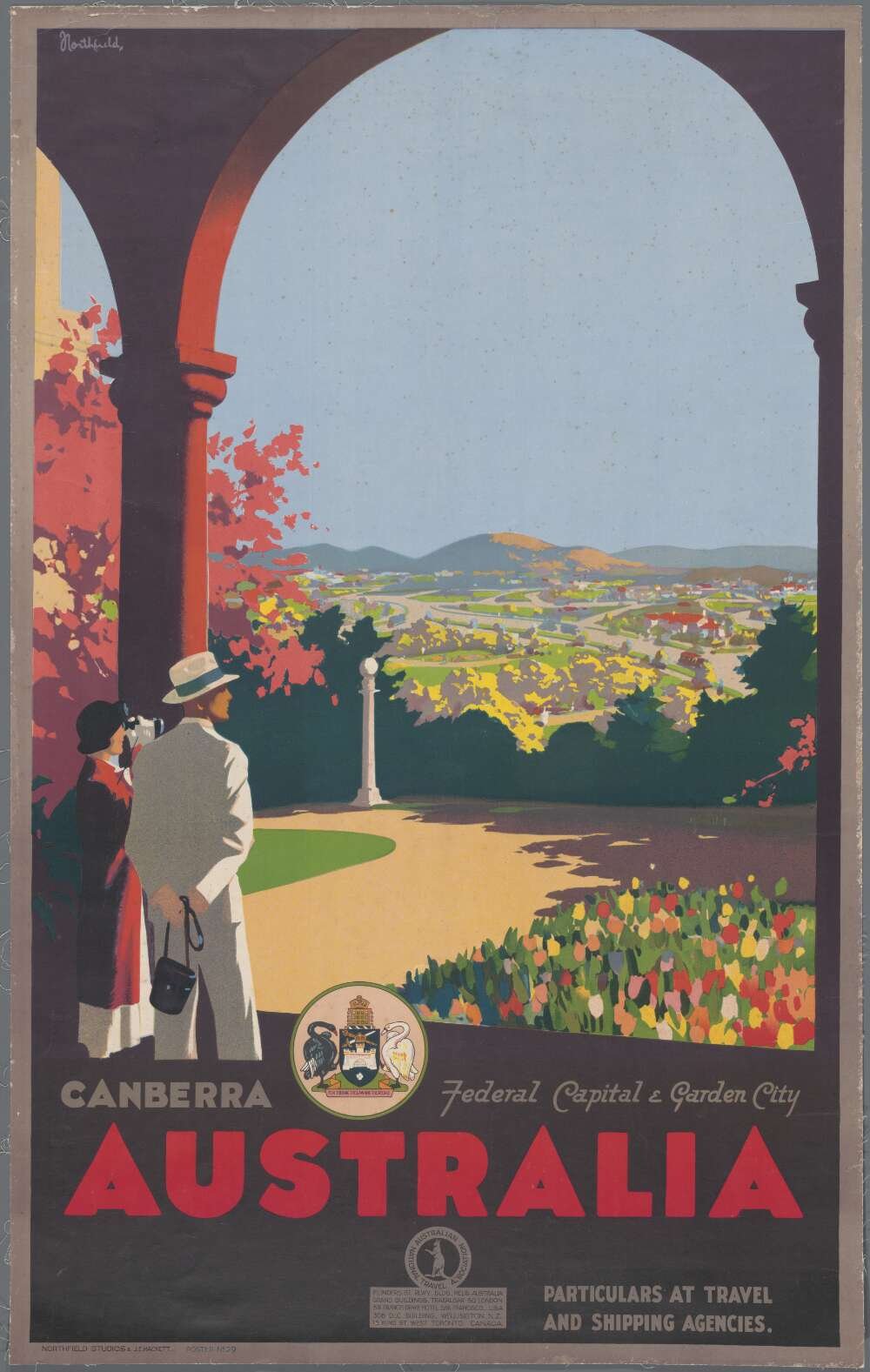
Northfield’s expert understanding of colour, combined with his technical capability to reproduce it through lithographic printing, resulted in posters that were both visually appealing and beautifully produced. The posters used motifs that depicted Australia’s unique sun, surf and sand and portrayed the country as an exotic travel destination.
Later in his career, Northfield continued to accept government and corporate commissions, producing posters for the Red Cross and the 1956 Olympic Games.
- Browse the James Northfield collection in Trove
- Check out this Australian tourism brochure which features a Northfield cover illustration
Fred Ward
Regular Library visitors might recognise the work of furniture and interior designer Fred Ward. A pioneering furniture designer who managed the design and construction of the original National Library furnishings, Ward believed that good design should be accessible, composed of simple shapes, and free from pretence.
In his early career, Ward lived and worked in Melbourne, where he counted amongst his friends and contemporaries Robin Boyd, Sidney Nolan, Cynthia Reed and many other household names in Australian art and design. Trained as a draughtsman, with education in woodworking and joinery, Ward’s eye for design and technical proficiency brought him to Canberra in 1952 to oversee the furnishing of University House at the Australian National University.

Ward’s designs offered a simple, unaffected elegance at a time when furniture trends were still caught up in the luxury world of antiques. He championed Australian timbers and used their unique qualities as the basis for his designs; simplicity allowed the wood grain and natural patterns to sing. His penchant for classic, modern design is still evident in the National Library today, with many original pieces still in place.
- Listen to this podcast on the furniture of Fred Ward, presented to a live audience in the Library in 2018
- View Max Dupain's 1968 photographs of the National Library interiors
Gordon Andrews
A designer that defied disciplinary boundaries, Gordon Andrew’s career achievements span commercial art, industrial design, sculpture and graphic design.
Andrews is best known for the artistic 'wave' design of Australia’s decimal currency banknotes for the Reserve Bank of Australia. His designs for the new $1, $2, $10 and $20 notes were selected by a panel of leading experts and released into circulation on 14 February 1966. These were soon followed by the $5 and $50 notes.

As an interior designer and visual artist, Andrews helped shape Australia’s international reputation through contributions to the Australian Pavilion of the Comptoire Suisse trade fair and tourist bureaus in New South Wales and New Zealand. Andrews’ design archive is held by the Powerhouse Museum in Sydney.
- Hear about the life and work of Gordon Andrews in his own words, interviewed by Hazel de Berg for the Library’s oral history collection
- Explore coverage in the leadup to the introduction of the decimal note in Trove, including this newspaper article by then-Treasurer Harold Holt on the selection of the design
- In the Library, request Andrews’ autobiography A Designer’s Life for viewing in the Reading Room
Loudon Sainthill
Hailing from Tasmania, Loudon Sainthill was an artist and designer whose creative output was heavily inspired by music, theatre and dance. In his early career as a painter, Sainthill’s depictions of the costumes and sets of the Ballets Russes de Monte Carlo earned the company’s attention; the paintings were exhibited in Sydney and later in London.
As Sainthill’s eye for on-stage glamour became more popular, demand for his design services grew. Between 1950 and 1969, he designed costumes and sets for a wide range of productions, including Sir Robert Helpmann’s ballet Ile des Sirenes, Michael Benthall’s The Tempest at the Shakespeare Memorial Theatre in Stratford-on-Avon, and productions of Othello, A Woman of No Importance and The Apple Cart. In 1969, Sainthill won the Tony Award for Best Costume Design for Broadway musical Canterbury Tales, a modern readaptation of Chaucer’s fourteenth century work.
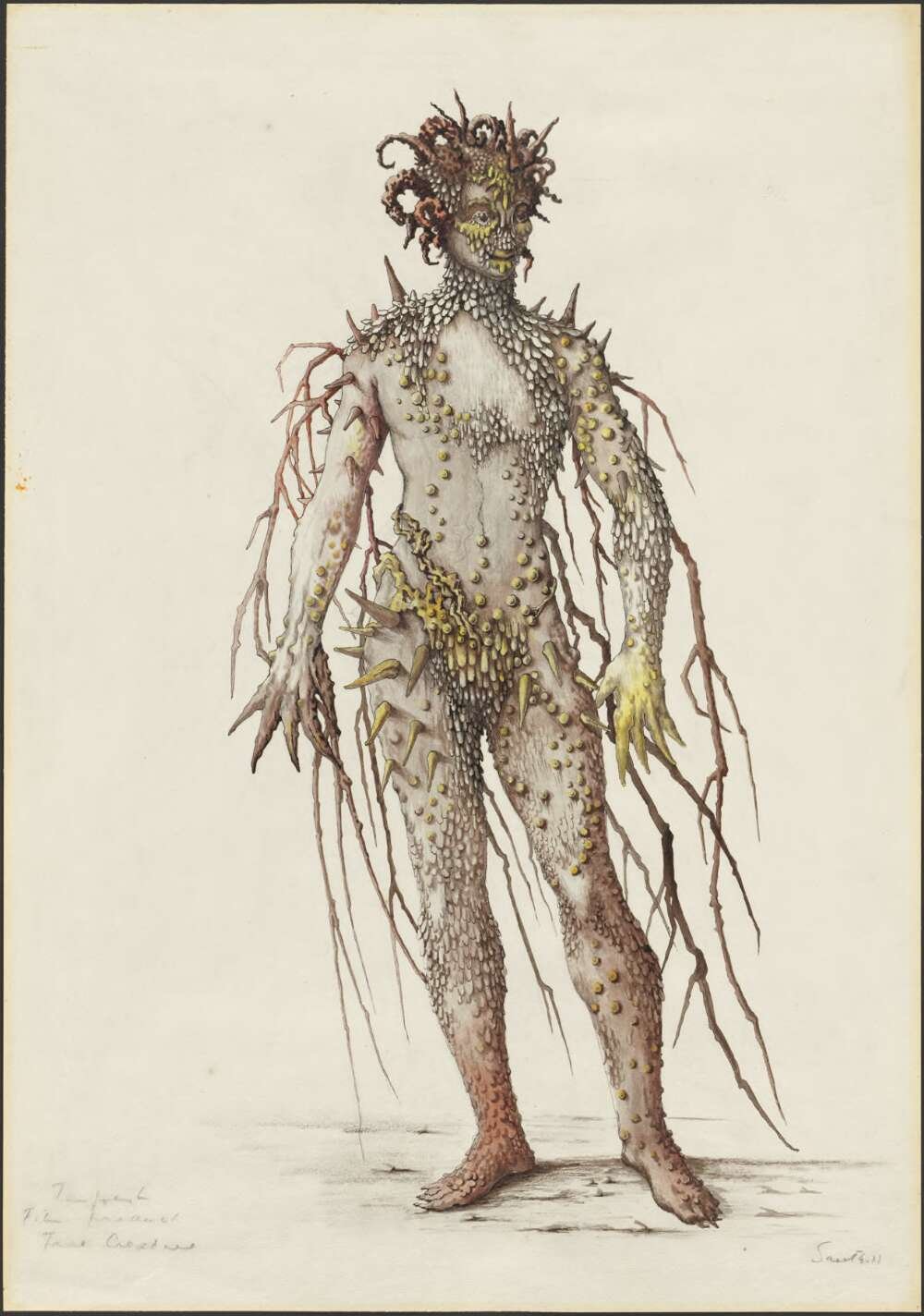
Sainthill’s background as a visual artist and early interest in surrealism influenced his later work, which lent a tactile, experiential quality to the stage. Though heavily influenced by the solemnity and grandeur of the ballet and opera, his designs often embraced the dark and absurd to evoke an emotional response in the audience.
- An early design for The Tempest can be viewed in Trove
- On Stage is an exhibition at the National Library that explores the history of the performing arts and can be viewed online
- Learn more about costume design with this short video
Grant and Mary Featherston
An iconic duo in Australian design history, Grant and Mary Featherston have left their mark on a broad range of disciplines. Their design partnership began in 1966 and continued until Grant’s passing in 1995. Over this thirty-year period, they collaborated on large scale design projects like the National Gallery of Victoria’s (NGV) interior fit-out and a range of furniture for manufacturing companies Aristoc and Uniroyal.
Featherston is a name synonymous with Australia’s mid-centry modern movement – one that’s enjoyed a remarkable renaissance in the design world over the last decade. The R152 Contour chair was released in 1951 and was acquired by the NGV four years later, securing Grant’s place in history as the first Australian industrial designer to have their work acquired by the gallery. The Contour range is wildly popular amongst collectors today and pieces sell for a high price.
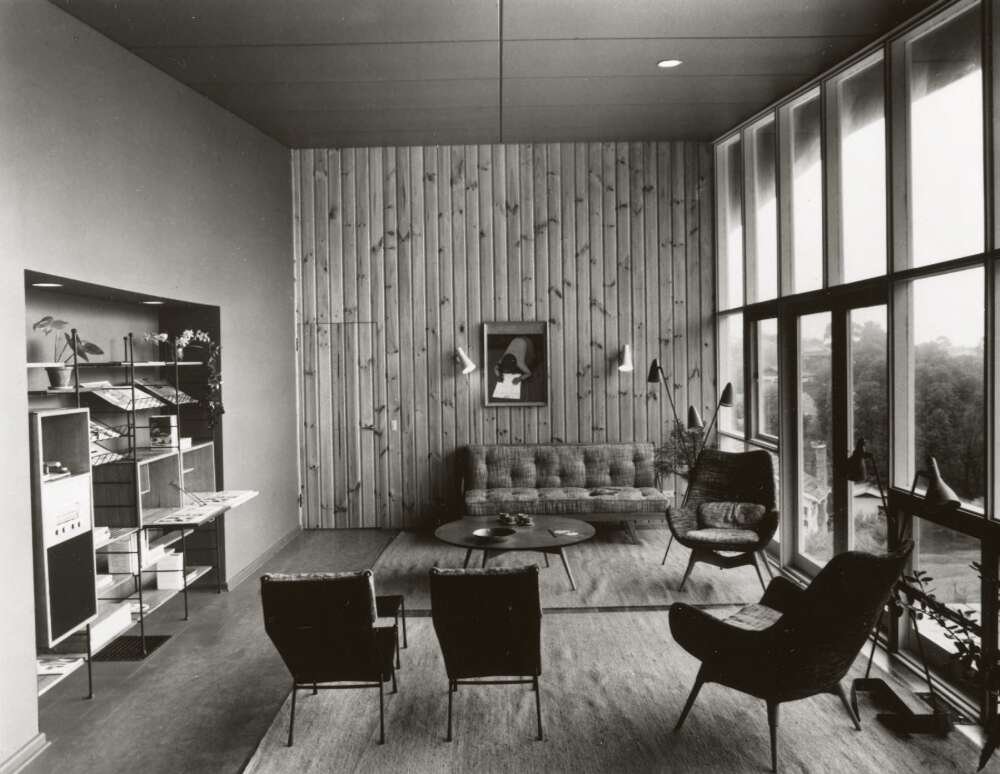
In addition to her partnership with Grant, Mary Featherston is well-known for her design of learning experiences and children’s play environments. She works across academia and practice to research, design and implement supportive learning environments in childcare centres and schools. Mary was made a Member (AM) in the General Division of the Order of Australia in 2020 for her service to the arts.
Jenny Kee
Jenny Kee is an Australian fashion designer best known for her colourful knitwear and scarves. Inspired by global art movements and Australian flora and fauna, Kee’s bright prints and distinctive style have earned her international accolades. Together with textile designer Linda Jackson, Kee’s designs contributed to the development of an Australian fashion identity that embraced colour, texture and whimsy.
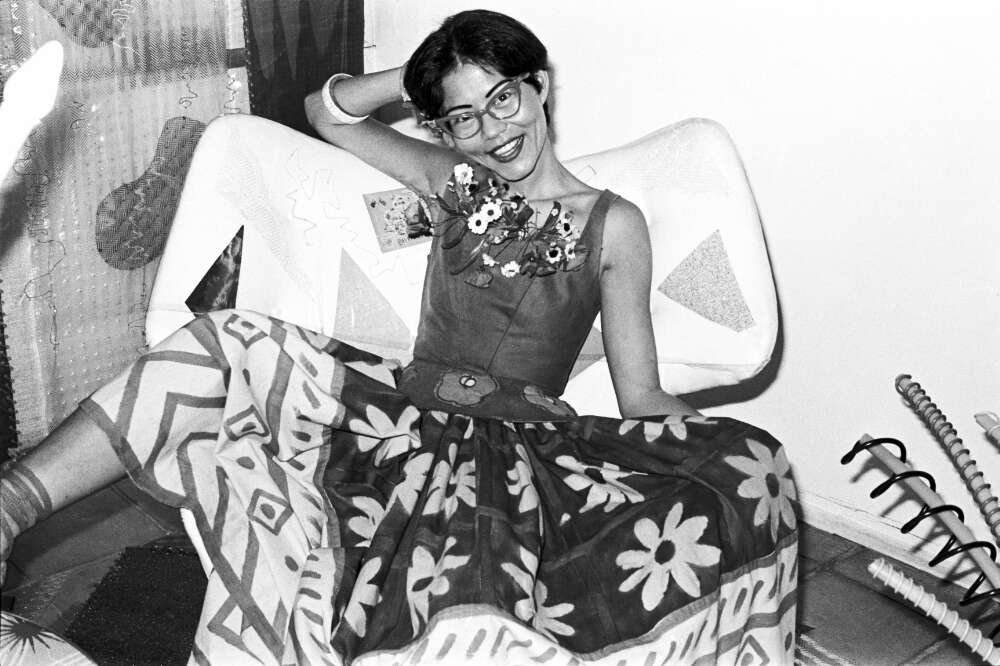
Kee’s fashion star rose throughout the 70s and 80s. In 1982, her Australian opal design was incorporated into Karl Lagerfeld’s first collection for Chanel. In the same year, at a polo game at Windsor Castle, Princess Diana was photographed wearing a Jenny Kee knitted jumper featuring a koala based on children’s character Blinky Bill. Press photos of the outfit reached far and wide, and demand for Kee’s already popular designs skyrocketed.
In 2013, Kee was named Australia’s Fashion Laureate. She was awarded the Order of Australia (AO) in 2018.
- In the Library, listen to Jenny Kee interviewed by Michelle Potter, or explore her autobiography
- Explore pictures of Jenny Kee photographed by William Yang
Akira Isogawa
Born in Japan and emigrating to Australia at age 21, Akira Isogawa is one of Australia’s best-known contemporary fashion designers. His career has been punctuated by accolades and honours: in 1999, he was named Designer of the Year at the Australian Fashion Industry Awards, in 2005 his likeness was printed onto a postage stamp as part of Australia Post’s ‘Australian Legends’ series, and in 2007 he was named Australia’s inaugural Fashion Laureate.
Isogawa has exhibited widely in Australia and overseas, including at the National Gallery of Victoria, the Powerhouse Museum in Sydney and the Victoria and Albert Museum in London. His designs have graced the stage for the Sydney Dance Company and the Australian Ballet.
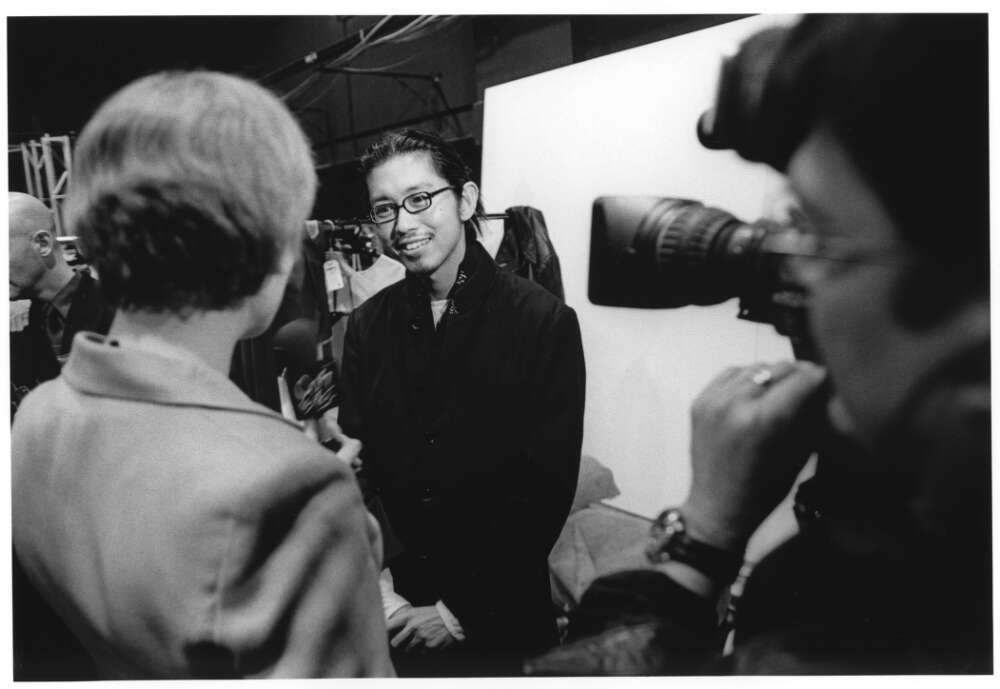
Releasing regular collections under his label Akira, Isogawa’s designs are influenced by the structural elements and sustainable ethos of Japanese textiles.
- Explore behind the scenes photographs of Isogawa in the studio and at Australian Fashion Week
- In the Library, request the Powerhouse Museum’s exhibition companion, Akira Isogawa: Unfolding a life in fashion